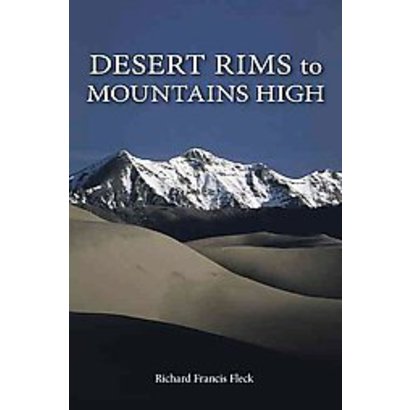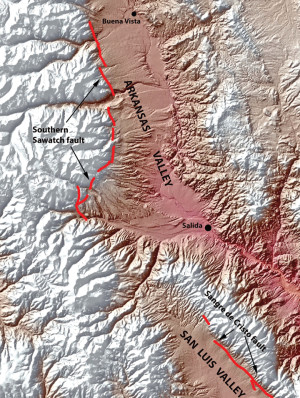 Desert Rims to Mountains High
Desert Rims to Mountains High
By Richard F. Fleck
224 pages, Graphic Arts Center Publishing Company 2013
ISBN-13: 9780871089687
Reviewed by Jane Koerner
Richard Francis Fleck’s Breaking Through the Clouds, published in 2004 by Pruett, covered a lifetime of outdoor exploration on two continents. In his recently published, renamed revision, Desert Rims to Mountains High, Fleck narrows his scope to the arid intermountain West so he can add deserts and prairie to the mountaineering adventures he recounts. He describes descents into Grand Gulch, Grand Canyon and Keet Seal, and ascents of Colorado fourteeners such as Longs, Bierstadt, Tabeguache and Princeton, among other peaks. He journeys as far south as the Pecos Wilderness Area of Texas, and as far north as the Black Hills of South Dakota.
Fleck’s knowledge of the history, natural history and literature of the American West enriches his accounts of outings with family, friends and students. He writes about the Anasazi’s penned turkeys, whose feathers were harvested for sleeping mats; the 3.9-billion-year-old remnant of a continental plate that may explain the unique east-west orientation of Utah’s Uinta Range; the sobering legend of Pin-ne-qua and Kiosh. Disgusted with Pin-ne-qua’s collusion with 40 gold-seeking Spanish soldiers, Kiosh alters the course of the sun, leading the party astray. A dying Spaniard kills Pin-ne-qua in a rage. The rest of the party dies of thirst.
Fleck’s Ph.D. in English, three summers as a ranger naturalist in Rocky Mountain National Park, and several decades of university teaching experience are put to good use. In his account of his ascents of Longs Peak, he includes Major John Wesley Powell’s first recorded ascent in 1868, and Isabella Bird’s ten years later with one-eyed Rocky Mountain Jim.
Hikers will relate to the scenic marvels and anxiety-provoking hazards of venturing into the backcountry in a variable climate – sunny and delightful one moment, blindingly hypothermic the next. On Grays and Torreys peaks, two of the most popular fourteeners in the Colorado Rockies, Fleck spots “mountain goats gathered on the rocky ledges below us. Their beards fluttered in the steady breezes. Alpine flowers, looking like miniature fiery suns, bobbed on their stalks.” On his way down, he has to negotiate slippery rock in a snowstorm.
[InContentAdTwo]
With his graceful prose and attentive eye, Fleck captures moments of awe that would be hard to replicate at his home in Denver, Colorado. Camping in the sand dunes at the foot of Colorado’s Sangre de Cristos, Fleck gazes up at the night sky. “A bright star rose over the dunes, while the moon hid behind creaking pine branches as though it were some kind of emerging blossom.” En route to the top of New Mexico’s Grandmother Spider Mountain, he glimpses a bluebird fluttering “above the grasses, lending itself as a patch of blue to an otherwise cloudy sky. Chickadees sang out from a fringe of pines as we crisscrossed the grassy hummocks. We had the sensation of walking inside a landscape of Paul Cezanne set at 11,000 feet.”
A map would help orient readers. Where are the San Francisco Peaks in relation to Jicarita and Harney peaks? Each chapter is devoted to one destination or several associated destinations. The journey grows predictable as Fleck adheres to the same chronology in most chapters. Linear narratives are easy to follow, but with fewer destinations perhaps, the author could have taken us deeper into his experience and developed a throughline that lingers in the imagination long after the book is set aside.
For hikers who share his enthusiasm for the interior West, Desert Rims to Mountains High will replenish a fading storehouse of memories and nurture an appetite for more. The interior West has more to offer than the 54 fourteeners that see half a million peak-baggers a year, a number that could double or triple by the end of the century, given the increasing number of guidebooks and online route descriptions. Fleck is fortunate to have climbed so many peaks before a regional pastime escalated into an international invasion. Historians in the future may look to his book for wistful comparisons, just as Fleck looks back on the experiences of his Native American and Anglo predecessors.
As a relentless rambler and fossil-fuel-dependent occasional urbanite myself, I can only dream of the purple, pristine skies of John Wesley Powell’s and Isabella Bird’s time.



